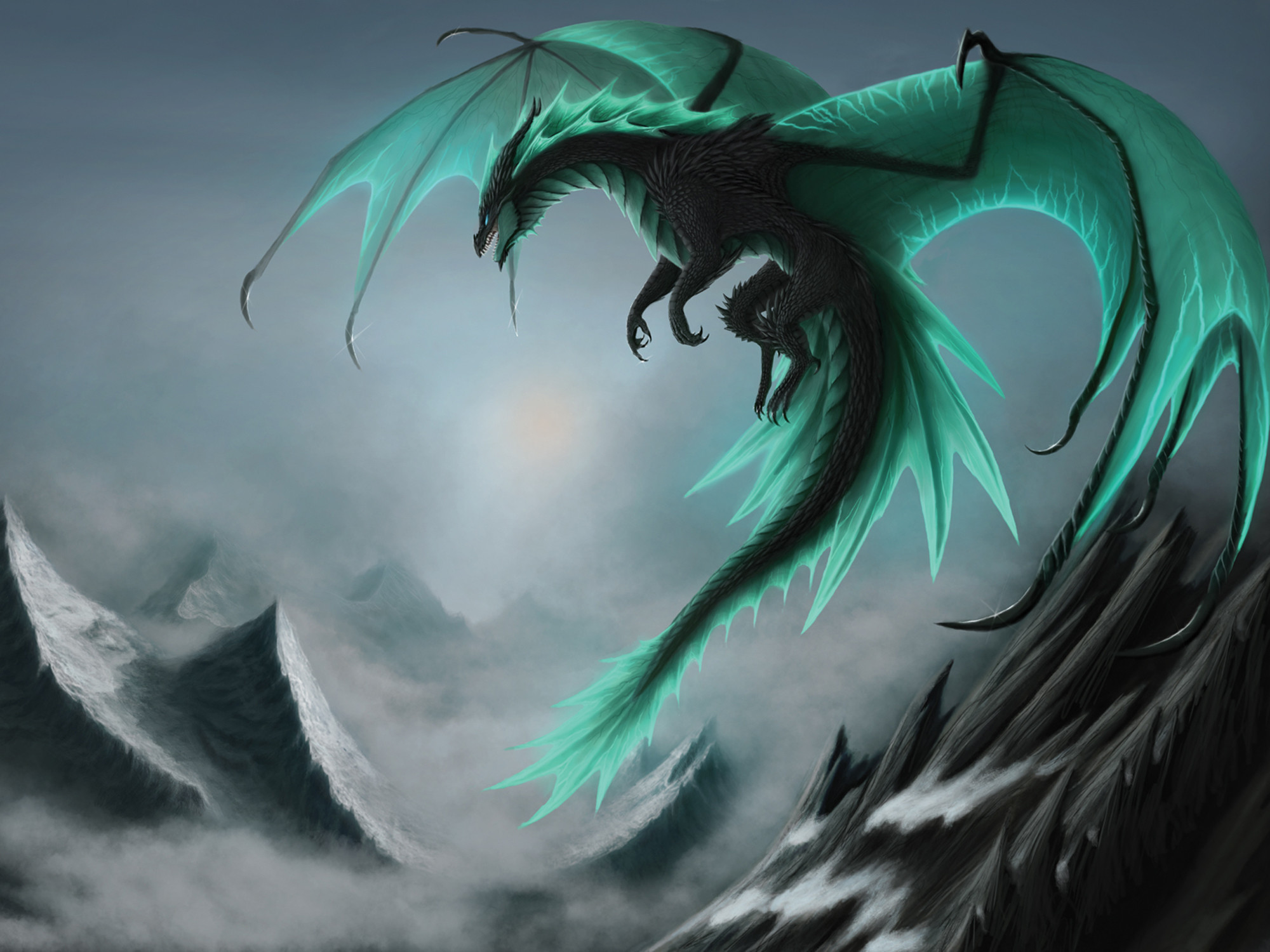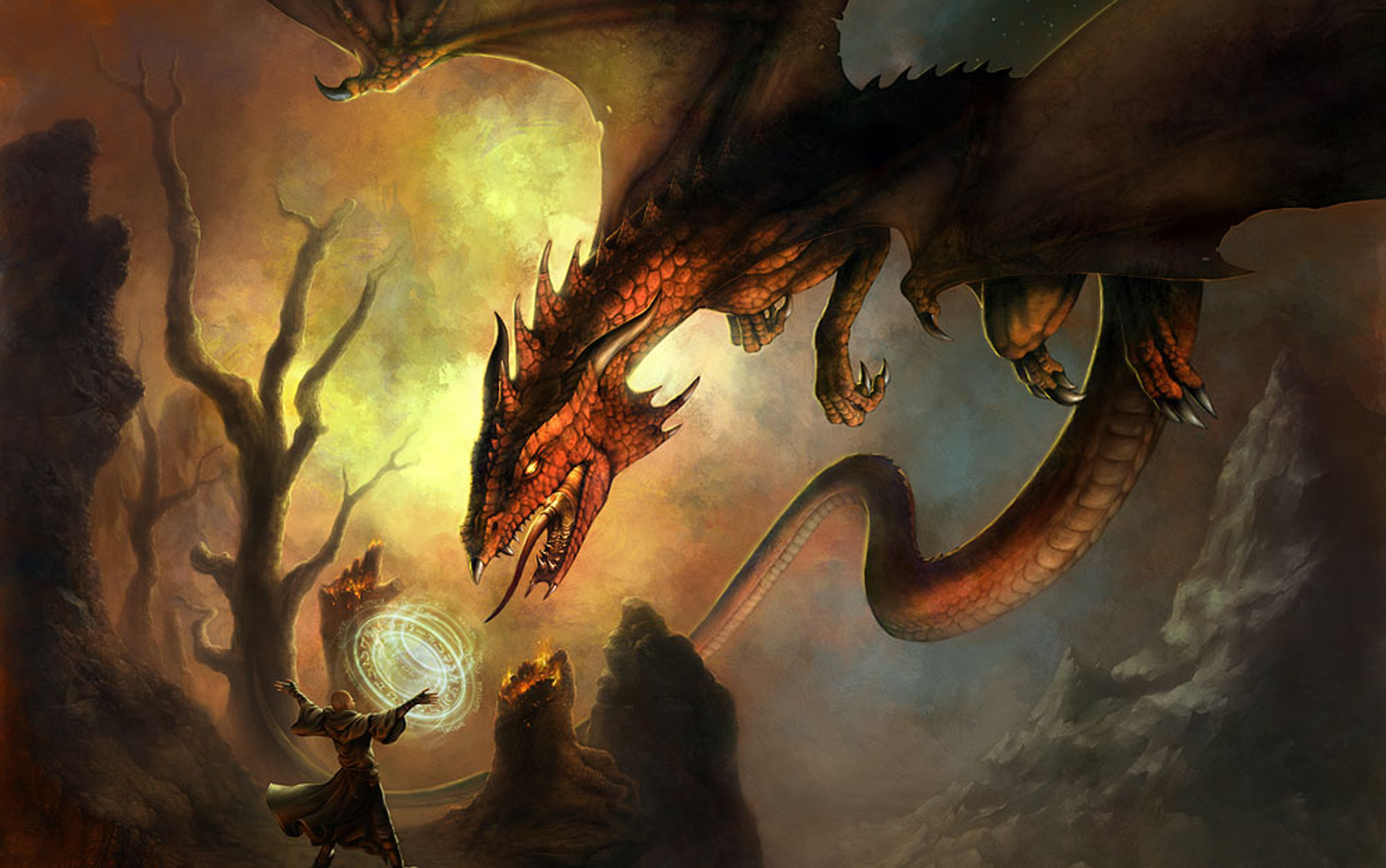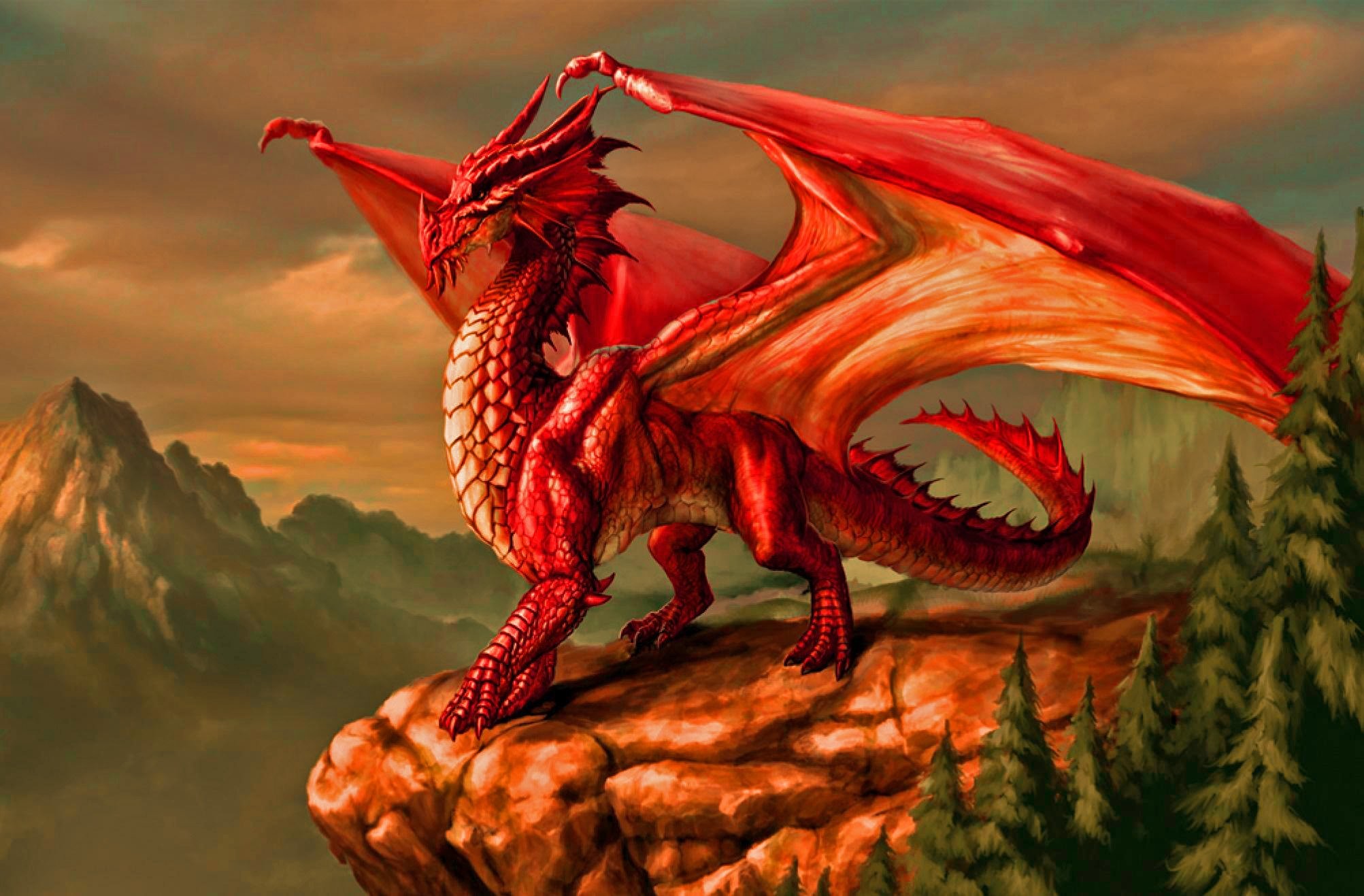Imagine, if you will, creatures of immense size and power, beings that could wrap themselves around the whole world or gnaw at the very roots of existence. These are not just fanciful tales for children, but rather deeply ingrained parts of a belief system that shaped how ancient peoples saw their surroundings. These magnificent, often terrifying, winged or serpentine figures play a truly significant part in the stories of the Norse folk, holding sway over both the fate of mortals and the very gods themselves. It's almost as if these creatures were living symbols of the great forces that seemed to control everything.
You see, these ancient tales, passed down through generations, speak of more than just monsters; they tell of chaos, of order, and of the inevitable cycle of creation and destruction. The presence of these formidable beings in the old stories helps us get a better sense of the challenges and fears that people faced long ago. They often represent something wild and untamed, a sort of natural force that can be both destructive and, in a way, necessary for things to change. So, when you hear about them, it's not just a scary story, but a window into a different time.
From the depths of the ocean to the roots of the cosmic tree, these legendary figures from the sagas are more than just background characters. They are, in fact, central players whose actions often set off major events, or whose very presence signifies a coming change. They are tied to the destiny of the world, to the end times, and to the eternal struggle that makes up so much of these old stories. People often wonder about the true impact these beings had on the minds of those who first told their stories, and it's quite something to think about, really.
- Wolverines Claws
- Why Are Bonnie And Clyde Famous
- A Silent Voice Plot
- Blake Griffin Family
- What Happened To Lex Lugar
Table of Contents
- What Are Norse Dragons - Mythical Creatures?
- How Did Dragons Shape Norse Mythology?
- Are All Dragons in Norse Mythology Evil?
- What Can We Learn from Norse Dragons Today?
What Are Norse Dragons - Mythical Creatures?
When we talk about the dragons from Norse mythology, we are not, in fact, always speaking of winged beasts that breathe fire, like some might picture from more modern stories. Instead, many of these creatures are more akin to giant serpents, often living in watery places or deep underground. They are usually portrayed as forces of destruction or symbols of greed, often guarding vast hoards of precious things. Their appearance tends to be quite fearsome, with scales that shimmer and teeth that can tear through anything, basically. They are truly something to behold, if you could, that is.
These creatures, you know, are deeply connected to the natural world, even if they are supernatural. They represent the wild, untamed aspects of nature, the things that can bring about great harm or upheaval. They are not simply animals, but rather beings with a kind of cunning intelligence, often capable of speaking or casting spells. Their presence in a story typically means something very significant is about to happen, perhaps a conflict or a test of character. It's like they are a living omen, in a way.
The tales of these creatures are spread throughout the Eddas and sagas, which are the main sources for what we know about the old Norse beliefs. Each one has its own distinct personality and purpose, contributing to the overall fabric of the cosmos as the Norse people understood it. They are, quite honestly, some of the most memorable figures in all of these ancient stories, leaving a very strong impression on anyone who hears about them. You really get a sense of their immense presence, too.
- When Life Gives You Quotes Funny
- Goodbye Dinner Invitation
- Ugly Funny Monkeys
- Highest Paid Plastic Surgeon In Los Angeles
- What Happens To Fiona Shameless
Fafnir - A Serpent's Tale
Fafnir is, perhaps, one of the most famous dragons from Norse mythology, though his story is really one of transformation and the corrupting effect of wealth. He started out as a dwarf, you see, a son of a powerful chieftain named Hreidmar. Through a series of unfortunate events involving a cursed ring and a great deal of gold, Fafnir became consumed by a terrible greed. This greed, in turn, changed him, making him take on the form of a huge, venom-spitting serpent, a creature that guarded his vast treasure hoard. He became, essentially, a living symbol of avarice, and that's pretty telling.
His story is a cautionary one, really, showing how a desire for riches can twist a being from its original form into something monstrous. Fafnir lay upon his gold, guarding it fiercely, never truly enjoying it, but rather just holding onto it with a terrible possessiveness. He was eventually slain by the hero Sigurd, who used his wits and a specially forged sword to get past the serpent's tough hide. The tale of Sigurd and Fafnir is, in fact, one of the most well-known heroic deeds in these old Norse accounts, illustrating bravery against a truly fearsome opponent. It's a classic battle, you know, good versus a kind of evil.
The blood of Fafnir, it is said, gave Sigurd the ability to understand the speech of birds, which helped him learn about betrayals and dangers. This part of the story shows that even in the most terrible of creatures, there can be some unexpected consequence or benefit, even if it's a strange one. The story of Fafnir is a powerful reminder that even the most powerful beings can be brought down by a determined hero, especially when greed has made them vulnerable. It's a pretty compelling narrative, you might say.
Jörmungandr - The World Serpent
Then there is Jörmungandr, a truly colossal creature, one of the three children of the trickster god Loki and the giantess Angrboda. This serpent is so unbelievably large that it wraps itself around the entire world, Midgard, biting its own tail. It lives in the vast ocean that surrounds the land, and its movements are said to cause great storms and tidal waves. This creature is, basically, a constant presence, a living boundary for the human world, and it's quite a thought, honestly, that something so immense could exist just beyond what we can see.
Jörmungandr is destined to play a central part in Ragnarök, the final battle that brings about the end of the world. At that time, it will rise from the waters, causing chaos and destruction, and will face its long-standing adversary, the god Thor. Their battle is one of the most anticipated and dramatic events in Norse mythology, a clash between two incredibly powerful beings. It's a moment that, apparently, will shake the very foundations of existence. The sheer scale of this serpent makes it a truly awe-inspiring figure in these old tales, too.
The idea of a creature encircling the world is a potent symbol, representing the interconnectedness of all things, yet also the constant threat of something breaking free and causing ruin. Jörmungandr is a force of nature, a primal power that cannot be truly controlled or contained. Its presence is a constant reminder of the fragile balance of the cosmos and the ultimate doom that awaits. It's like a ticking clock, in a way, for the whole world.
Níðhöggr - The Corpse-Eater
Deep beneath the roots of Yggdrasil, the mighty World Tree that connects all the nine realms, dwells Níðhöggr, a truly fearsome serpent or dragon whose name means "corpse-tearer" or "malice-striker." This creature constantly gnaws at one of the roots of the tree, specifically the one that reaches down into Niflheim, a very cold and misty land. Its persistent actions are a constant threat to the stability of the entire cosmos, a slow but steady act of destruction. It's a rather unsettling thought, that something so vital could be under such constant attack.
Níðhöggr is not just a mindless beast; it also engages in a continuous exchange of insults and news with the eagle that sits at the very top of Yggdrasil, with the squirrel Ratatoskr acting as the messenger. This interaction, while seemingly trivial, highlights the deep connections and tensions that run through all parts of the Norse cosmos, from the highest branches to the lowest roots. It's a kind of cosmic drama playing out, basically, with this dragon as a key player in the underworld. You know, it really shows how everything is linked.
This dragon also feeds on the bodies of the dead who have committed particularly heinous acts, those who have broken oaths or murdered others. This role as a consumer of the wicked further solidifies its position as a creature of punishment and decay, a part of the darker side of the Norse afterlife. Its actions are a constant, slow force of entropy, a kind of background hum of destruction that reminds everyone of the ultimate fate of all things. It's a pretty grim job, honestly, but someone has to do it, in a way.
How Did Dragons Shape Norse Mythology?
The dragons from Norse mythology were not just scary monsters; they were, in fact, powerful symbols and active agents that profoundly influenced the direction of many important stories. Their presence often marked turning points, whether it was a hero's quest for fame, a god's struggle against chaos, or the foretelling of the world's end. They were, in some respects, living embodiments of the challenges that both humans and gods had to face. They really added a lot of weight to the narratives, you see.
These creatures, you know, provided a clear and present danger that heroes could overcome, thus proving their worth and gaining great renown. Think of Sigurd and Fafnir; without the dragon, there would be no legendary feat, no magical abilities gained from its blood. The dragons served as obstacles that, once conquered, led to significant personal or cosmic changes. They were, essentially, catalysts for growth and destiny, pushing characters to their limits. It's almost like they were there to test everyone, in a way.
Beyond individual heroic tales, the dragons also played a crucial part in the larger cosmic narrative, particularly concerning the fate of the gods and the world itself. Their actions, or even their very existence, often pointed towards the eventual destruction and rebirth of the cosmos. They were, basically, a constant reminder of the cyclical nature of time and the inevitability of change, even for the most powerful beings. Their influence was quite widespread, honestly, touching on so many aspects of the old beliefs.
Dragons in Prophecy and Doom - Norse Mythology's Portents
The presence of dragons in Norse mythology is very much tied to prophecy and the concept of doom, particularly the great event known as Ragnarök. Jörmungandr, for instance, is not just a giant serpent; its rising from the ocean is one of the key signs that the final battle is about to begin. Its very existence, encircling the world, is a constant, quiet threat, a sort of countdown to the ultimate end. This connection makes these dragons more than just beasts; they are, in fact, living harbingers of fate, and that's a pretty heavy role to play.
Níðhöggr, too, with its relentless gnawing at the roots of Yggdrasil, represents a slow but steady decay, a kind of internal threat to the cosmic order. Its actions are a constant reminder that even the most stable structures can eventually crumble. The damage it inflicts contributes to the overall weakening of the world tree, which will eventually fall during Ragnarök. It's like a persistent, underlying illness that eventually leads to a complete collapse, in a way. You can almost feel the tension its presence creates.
These creatures, therefore, are not just random monsters to be fought; they are integral parts of the grand narrative of creation and destruction that defined the Norse worldview. They embody the forces of chaos and entropy that are always at play, even during times of peace. Their eventual roles in the final conflict make them truly significant figures, tying them directly to the destiny of gods and mortals alike. Their stories are, basically, warnings and predictions rolled into one, giving a deep sense of inevitability to the ancient tales. It's quite a powerful concept, really.
Are All Dragons in Norse Mythology Evil?
It's a fair question to ask if every single dragon from Norse mythology is, without exception, a force of pure evil. While many of the most prominent ones, like Fafnir, Jörmungandr, and Níðhöggr, are indeed portrayed as destructive or malevolent, it's a bit more nuanced than a simple good-versus-bad distinction. Their actions often bring about chaos or death, but they are frequently driven by their nature or by curses, rather than a deliberate choice to be "evil" in a human sense. They are, essentially, forces of nature, and nature can be pretty harsh, you know.
Fafnir's transformation, for instance, stemmed from greed, a very human flaw, but his serpentine form was a consequence of that moral decay. He wasn't born evil, but became so through his own actions and the influence of a cursed item. Jörmungandr and Níðhöggr, on the other hand, seem to exist simply to fulfill their roles in the cosmic order, even if those roles involve destruction. They are part of the grand design, so to speak, rather than beings who choose to be malicious for maliciousness' sake. It's almost like they are just doing their job, even if that job is quite terrifying.
Some interpretations suggest that these creatures represent the wild, untamed aspects of the world, the parts that resist order and control. They are not necessarily "evil" in the way a human villain might be, but rather a necessary counterpoint to the forces of creation and order. Their existence ensures balance, even if that balance includes destruction and renewal. So, while they are certainly dangerous and often bring about terrible events, labeling them all as simply "evil" might be missing a bit of the bigger picture. They are, in fact, complex figures within a complex worldview, and that's something to think about, too.
What Can We Learn from Norse Dragons Today?
Even though these stories about dragons from Norse mythology come from a very different time, they still hold some interesting lessons and reflections for us today. For one thing, they offer a powerful look at how ancient cultures tried to make sense of the world's dangers and uncertainties. The dragons represent the things that were beyond human control, like natural disasters or the inevitable march of time towards an end. They are, in a way, symbols of the unknown and the forces that shape our existence, which is pretty universal, you know.
The tales of these creatures also speak to the consequences of human actions, particularly greed, as seen with Fafnir. This idea that unchecked desire can corrupt and transform a being into something monstrous is a message that continues to resonate. It's a reminder that our choices have significant impacts, not just on ourselves, but on those around us and, perhaps, even on the wider world. It's like a very old warning that still holds true, basically.
Furthermore, the persistent nature of creatures like Níðhöggr and Jörmungandr, who are always present and always performing their roles, even if those roles are destructive, can teach us about resilience and the cyclical nature of life. They remind us that even in the face of immense power and seemingly inevitable doom, there is a constant struggle, a continuous process of becoming and unbecoming. These stories, in fact, encourage us to think about our place in the larger scheme of things, and that's something worth considering, really.
The enduring appeal of dragons from Norse mythology also shows our human fascination with powerful, mysterious beings that exist just beyond our everyday understanding. They tap into a deep part of our collective imagination, providing a way to explore themes of heroism, fear, destiny, and the very structure of the cosmos. These old tales, therefore, are more than just entertainment; they are a window into how people once viewed their place in a world filled with both wonder and peril. They are, quite honestly, still very much alive in our minds, too.
Related Resources:



Detail Author:
- Name : Isac Kohler
- Username : jwyman
- Email : carolyne.kessler@yahoo.com
- Birthdate : 1978-04-07
- Address : 4522 Ariane Trail Timmybury, WV 88995-3314
- Phone : 657-660-3624
- Company : Grady PLC
- Job : Courier
- Bio : Omnis cumque dolorum rem blanditiis et. Eos assumenda qui laboriosam recusandae minus hic molestiae deserunt. Amet dolores illo tenetur sapiente dolores harum.
Socials
linkedin:
- url : https://linkedin.com/in/ramonagerhold
- username : ramonagerhold
- bio : Adipisci deserunt modi vel.
- followers : 5839
- following : 1131
facebook:
- url : https://facebook.com/ramona_official
- username : ramona_official
- bio : Neque ad debitis eos dicta incidunt possimus.
- followers : 1661
- following : 2177